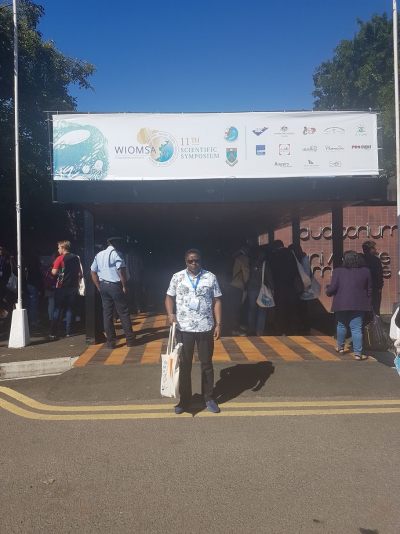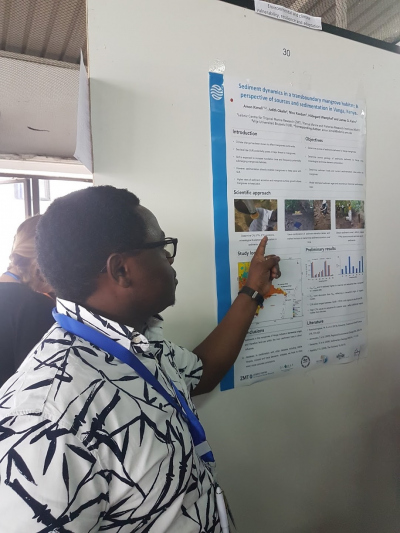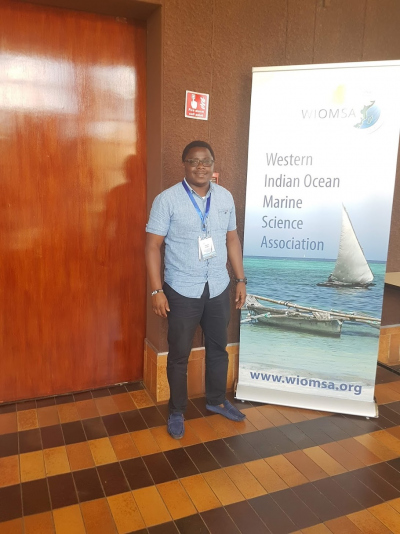Amon Kimeli
Report of GLOMAR PhD student Amon Kimeli about his participation in the 11th Western Indian Ocean Marine Science association (WIOMSA) Scientific Symposium 2019 in Redùit, Mauritius from 1 to 6 July
The Western Indian Ocean Marine Science Association (WIOMSA) is dedicated to promoting the educational, scientific and technological development of all aspects of marine sciences throughout the Western Indian Ocean (WIO) region (consisting of 10 countries: Somalia, Kenya, Tanzania, Mozambique, South Africa, Comoros, Madagascar, Seychelles, Mauritius, Réunion (France)), with a view toward sustaining the use and conservation of its marine resources.
My PhD project’s goal is to investigate the sources of sediments delivered by the transboundary Umba River to the transboundary mangroves of Vanga and also determine the current and historical sedimentation rates within the mangroves of Vanga. We expect that the sediments deposited in the transboundary Vanga mangrove ecosystem are derived from the Umba River catchment influenced by land use and that the accumulation rates within the mangroves are still relatively higher than reported rates of sea level rise.
The 11th WIOMSA symposium afforded me the opportunity to meet with regional and international researchers with a keen interest in the tropics especially the Western Indian Ocean (WIO) region. The abstract I submitted to the conference on “Sediment dynamics in a transboundary mangrove habitat: a perspective of sediment sources, current and historical sedimentation in Vanga, Kenya”, was accepted for a poster presentation and allocated space on Wednesday the 3rd of July 2019 coinciding with the poster theme on “critical habitats and environmental and climate vulnerability, resilience and adaptation”. The highly attended poster session offered a perfect opportunity to get feedback on my ongoing work, criticisms new perspectives on the topic and ultimately new networks. The bulk of the feedback and discussions were mainly from fellow PhD students, postdocs, and well-established scientists.
I also had the opportunity to attend other conference events between 1st - 6th July 2019 that included oral sessions, posters, mini symposia and special sessions. For instance, I attended all the keynote presentations and the break-out sessions on mangrove status and ecosystem services and mini symposium on blue carbon in the WIO region (both on 1st July 2019). I also attended the special sessions on science communications, WIOMSA scientific journal and GEBCO seabed 2030 project. Overall the 11th WIOMSA scientific conference was a success and i greatly benefitted from attending. The overview of current research, feedback and input for my own work and the new networks created is immeasurable. Additionally, I am now part of two multi-country group of researchers developing a project proposal on pre-Anthropocene status of the WIO region and i have been tasked with a section on sediment dynamics and reconstruction of Holocene sea level curves.
I therefore sincerely thank GLOMAR for the financial support to attend this impressive and relevant conference.





